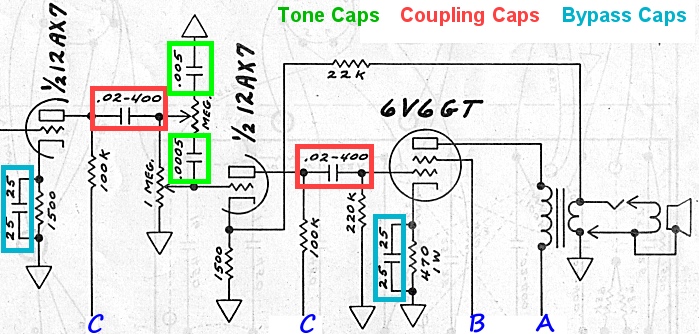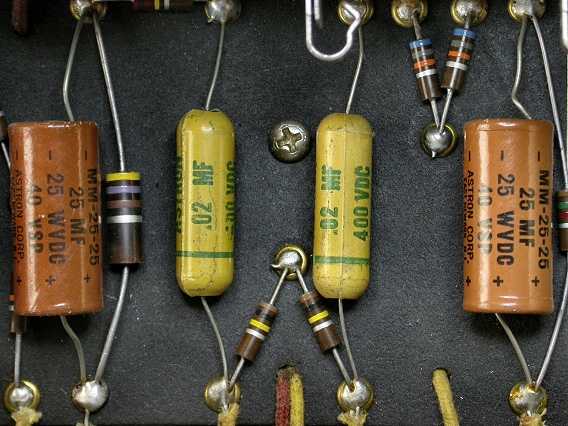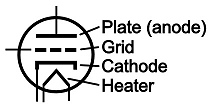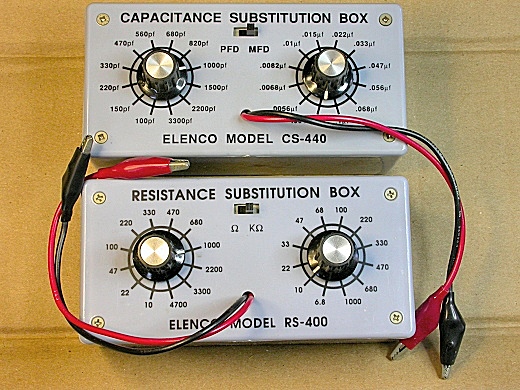|
Filter capacitors in an amp's power supply smooth out pulsating DC (direct current)
coming from the amp's AC rectifier (the device that lets
current flow just one way). Filter capacitors store
electric charge as it flows in from the alternating house
current (the AC).
When the house current reverses direction, the stored charge is
there to power the amplifier. In other words, the filter caps make
possible a steady supply of voltage and current.
The primary filter cap is the one closest to the rectifier output.
It stores energy for the amp's output stage.
In the schematic below, the filter caps are outlined in blue. The primary capacitance, at point A,
consists of two 16 μF capacitors wired in parallel,
making the total primary capacitance 32 μF.
Subsequent filter caps, at points B and C,
store charge for earlier amp stages.
The resistors between the filter caps decouple the stages so they don't
interact, and also prevent overloading of the rectifier tube.
Fig. 1 —
Power Transformer, Full-Wave Rectifier,
Filter Capacitors
All power supply filter caps are "electrolytics".
Electrolytic caps contain an electrolyte (an ionic conducting paste) that causes an
oxide coating to form on the
positive plate
of the capacitor.
The thin coating serves as the insulating layer between the two
capacitor plates. Electrolytic caps can provide large
capacitance values in a small package.
All electrolytic caps are polarized. That means the only
way they can be operated without damage is with a lower voltage on the
terminal marked " − ".
Decreasing the Filter Capacitance
Decreasing the capacitance of a filter cap
decreases its storage space, making less charge available to power the
amp.
During peak demands, like a percussive bass note or a sudden chord, the
voltage supply will sag.
When the voltage supply sags, the gain of the amplifier goes down.
Then, when the demand subsides, the gain goes back up.
This gain compression can
be musically desirable, improving the "feel" of the amplifier
as it self-adjusts to the player's attack.
However, if you lower the filter capacitance by too much, unfiltered AC
hum can propagate through the amp.
Increasing the Filter
Capacitance
Increasing the capacitance of a power supply filter cap lets it store
more electrons. Hence, there's a steadier supply of current, but at a lower
voltage since the charge is more spread out.

A steady supply of current reduces the gain
compression, yielding a truer, less spongy response.
But a lower supply voltage makes signals clip at a lower volume (right).
A steady supply of current also gives a tighter, more prominent bass.
That's because long duration, low-frequency waves need a larger store
of charge
than do short duration, high-frequency waves.
Raising the filter capacitance of a pre-amp's power supply
(point "C" in Fig. 1) can extend an amp's bass response but, in excess,
it can make the amp sound woofy, waste power on frequencies it can't
produce, or become unstable.
Raising the primary filter capacitance can damage
an amp by drawing too much current through its power
transformer and rectifier. Primary caps
aren't usually a target of modders.
|






